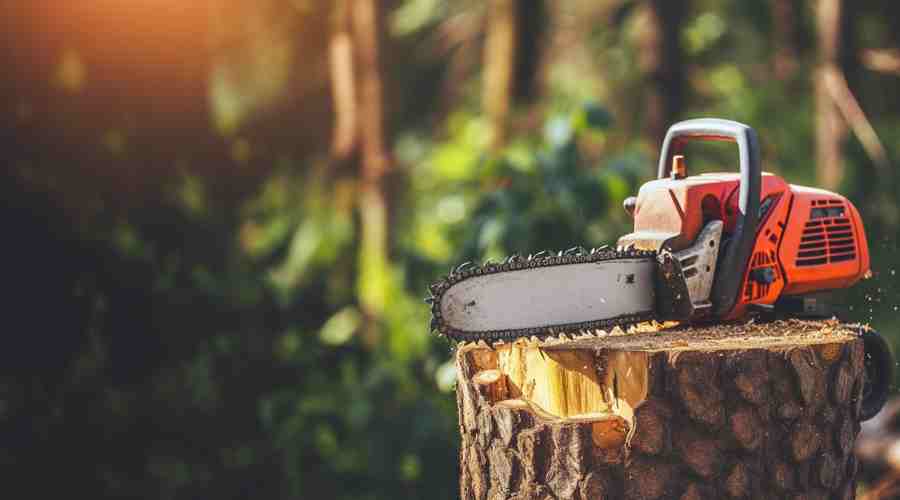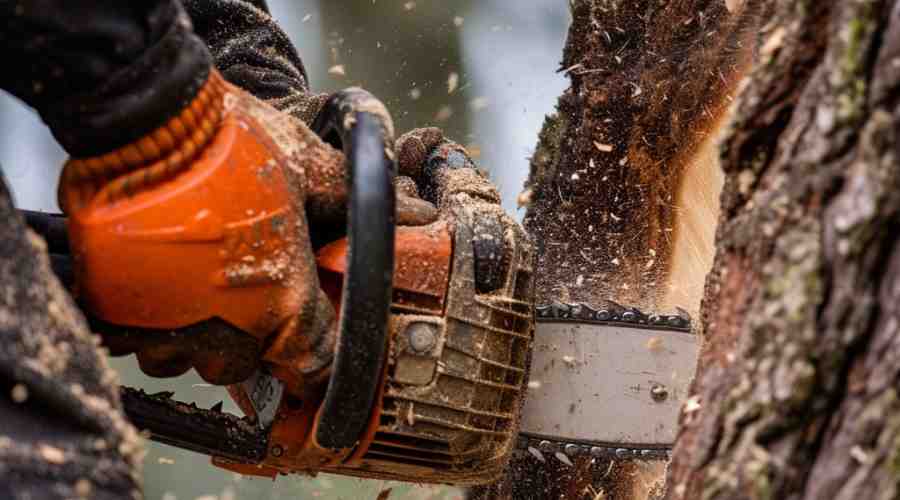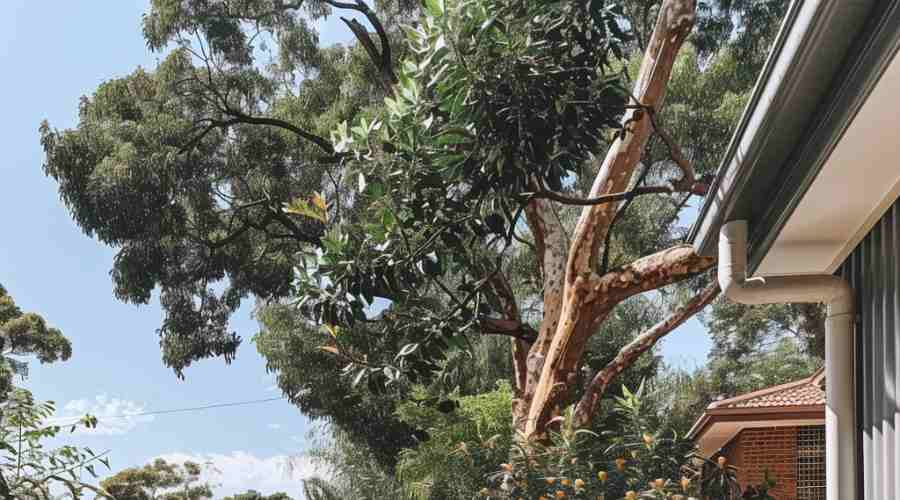The Environmental Impact of Tree Removal
How Taking Down Trees Impacts the Planet
Removing trees can have a significant effect on the surrounding ecosystem. Trees provide many ecological benefits. They absorb carbon dioxide, mitigate stormwater runoff, prevent soil erosion, create wildlife habitat, and contribute to a community’s character. However, there are circumstances when tree removal is necessary, such as disease risk, storm damage, or infrastructure projects. This article explores the key considerations around tree removal and best practices for protecting environmental values.
What are the Environmental Impacts of Tree Removal?
1. Increased carbon dioxide
Trees are nature’s vacuum cleaners that suck CO2 greenhouse gas out of the air to help fight climate change. Losing trees stops them cleaning and trap less gas. It can also let stored gas escape from chopped down trunks and roots. More of it left in the air causes more heat to be trapped, impacting the whole planet.
2. Extra stormwater flooding
Tree branches and leaves form a roof canopy that catches rainfall, like a big umbrella over neighborhoods. The canopy helps the water gently sink into soil instead of fast flooding runoff. Axing trees takes away this natural rainwater control. More water then rushes into storm drains causing local floods.
3. Weakened ground and soil erosion
Trees grip dirt secure with their extensive root systems below ground. Their fallen leaves also create a spongey ground layer that absorbs rain impact. Removing trees deletes these soil stabilisers. When heavy rain arrives, loose dirt easily breaks away causing landslips and mudslides downstream.
4. Loss of Habitat
Mature trees are towers of life creating homes and breeding grounds for birds, possums and vital pollinator insects like bees. Their hollows offer safe nesting spots while flowers and seeds give forest food sources. Wiping out trees evicts animals from these havens and life support systems. Many connected ecosystem links become broken.
5. Urban heat island effect
Leafy trees bring welcome shade that naturally cools people and buildings using nature’s air-con. Culling trees deprives suburbs of this cooling effect. Hard surfaces like roads then overheat neighborhoods, increasing climate change impacts plus electricity bills from cranked up air conditioning.
6. Loss of identity
Unique old landmark trees in a suburb represent community heritage, giving a sense of belonging. Lopping these icons, sometimes there for centuries untold local stories, makes everywhere look the same. Culture and connections to the past disappear when nature landmarks vanish.
7. Disrupted water cycle
Trees play a huge role in the natural water cycle. Tree roots draw water from the ground. Leaves then release it into the air through transpiration. The moisture creates inland rainclouds that bring rainfall. Removing trees damages this circulation. It limits how much groundwater trees can suck up. Less moisture also makes shorter rainclouds, reducing essential rain fall.
8. Worse air quality
Trees help filter harmful pollution like ozone, sulfur dioxide and small dusty particles out of the air we breathe. Their leaves catch and absorb pollution washing the air. Fewer trees means less cleaning of toxins. Pollution then builds up creating smoggy skies making people sick with lung problems. Also less oxygen gets produced which we need to live.
Factors to Consider Before Removing Trees
Several factors should be evaluated before deciding to remove any tree:
- Tree health – Is it a diseased tree, decaying or dying? Can the health of the tree be improved?
- Risk to property – Does the tree pose an unacceptable risk of damage? Can pruning reduce the risk to an acceptable level?
- Infrastructure conflicts – Does the tree interfere with utilities, surfaces or structures. Can these conflicts be addressed without removing the tree?
- Alternatives – Are there options besides removal, such as pruning, relocating infrastructure or installing tree root barriers?
Tree removal should be a last resort option after the above factors have been considered. Independent, qualified arborist can help objectively evaluate these factors.
Best Ways to Remove Trees Sustainably
If a tree truly does need taking down, some methods help lower impacts:
Enforce re-planting rules
Make laws that the same leaf canopy gets replaced overtime by new trees. Brisbane Council wants double the fallen canopy replanted at two new trees for every removed old tree.
Save standing trees
Mark safe zones around remaining healthy trees to protect roots and branches from builders and machines.
Check breeding bird timing
Do surveys first to avoid wrecking active nests and bird families in tree homes during removal works.
Safely rescue wildlife
Get wildlife groups to gently relocate animals found hiding in hollowed trunks to new habitats where they can thrive.
Avoid peak breeding times
Steer clear of core spring birth seasons that would disturb nesting native species.
Keep habitat stumps
Leave high cut down trunks as interim shelters and food sources until fresh saplings grow back.
Reuse wood scraps
Save nutritious logs, mulch and chips to reuse onsite. Rotting timber holds nutrients and carbon from the fallen tree.
Using methods like these when forced to remove trees can help regrow lost canopy and assist displaced creatures get new starts.
Importance of Replanting After Tree Removal
Replanting is a critical component of sustainable tree removal. New trees support the following:
- Rebuild creature homes and forest links
Replantings provide new food sources and breeding spots so native animals bounce back with a new generation.
- Rebuild leafy area benefits
New tree growth will slowly provide shade, rainwater control and cooler air once more as greenery fills back in again.
- Fresh start to scenery and character
With time, fresh plantings bring improved views, natural beauty and community spirit again for locals.
- Absorb future carbon impacts
As baby trees grow larger year by year, they increasingly suck up and trap carbon pollution helping fight climate change.
Ideally, replanting should happen quickly where the fallen tree used to stand. Local native types matched to the location and soil give the best results. An experienced tree expert can advise on suitable options. Replacing lost mature trees does cost money initially but pays back big benefits long into the future for both community and environment.
Professional Guidelines for Tree Removal Operations
Adhering to formal best practice guidelines is important for managing environmental risks from tree removal. In Australia, qualified arborists and tree care specialists follow standards such as:
- Australian Standard AS 4373 Pruning of Amenity Trees – National standard for tree pruning.
- Arboriculture Australia – Industry body with codes of practice and qualifications.
- Brisbane City Council Guidelines – Local standard operating procedures for tree care and biodiversity.
Following trusted guidelines like these ensures appropriate qualifications, planning, procedures, wildlife protections and recovery approaches. Using qualified professionals protects environmental as well as public safety outcomes.
Frequently Asked Questions
What level of tree loss typically requires a permit?
Brisbane City Council requires a permit for removing any tree with a trunk over 40cm diameter or cutting of major structural branches. Fines can apply for non-approved work.
What are signs a tree may be dangerous and require removal?
Warnings signs include decay fungi, cracks, damaged bark, dead branches and leaning trunks. An arborist inspection helps determine actual hazard levels.
Are habitat boxes an option to replace hollows lost by removed tree?
Yes, well-designed nest boxes can effectively replicate tree hollows. However boxes require careful placement and maintenance to be utilised.
Is retaining tree stumps better or worse for the environment?
Stumps retain soil, nutrients and fungi so are preferable for regeneration. However, they can sprout suckers so need ongoing maintenance.
Should I be concerned about the chemicals used during tree removal?
Responsible professionals use low toxicity, biodegradable substances. They also contain and carefully target application to minimise risks.
Conclusion
Tree removal presents clear environmental costs from loss of established canopy cover. But, sustainable practice can reduce long-term impacts. Conducting appropriate assessment prior to removal, applying best practice standards, reusing materials, replanting lost trees and utilising professionals will collectively help regenerate vital urban forests. With careful planning the negative effects of necessary tree removals can be offset, restoring the many benefits that trees provide society.



